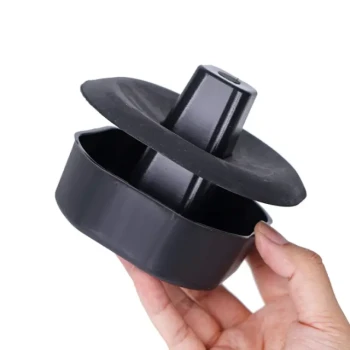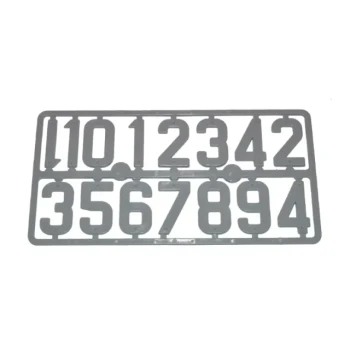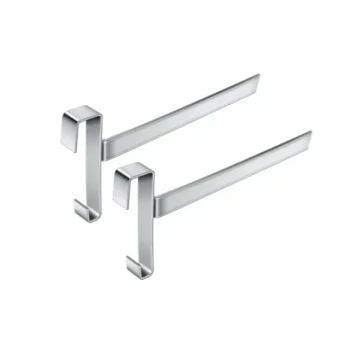Painting a beehive with exterior latex paint is a critical step for protecting the wooden components from the elements. This simple act of maintenance safeguards the structural integrity of the hive against rain, snow, and sun, directly extending its usable lifespan and protecting your investment.
The primary goal of painting a hive is not decoration, but creating a durable, weather-resistant shelter. The correct choice of paint and color directly contributes to the health of the colony by ensuring the hive remains dry and thermally stable.
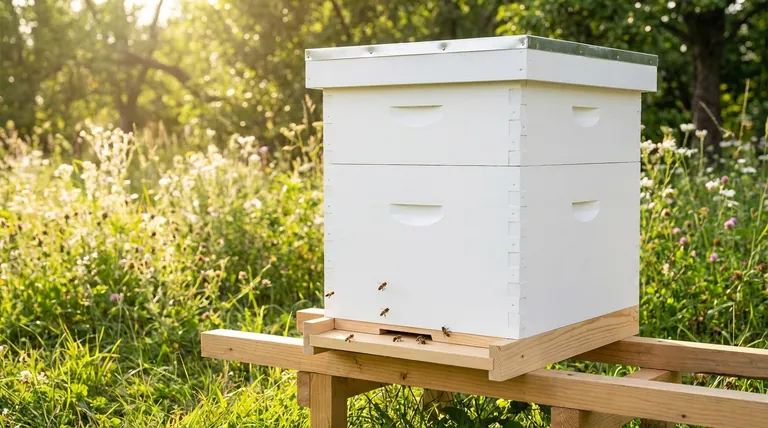
The Core Function: Weatherproofing Your Hive
Unprotected wood is vulnerable to the environment. Applying the right paint is the first line of defense in protecting the physical structure that houses your honey bee colony.
Protecting Wood from Moisture
Bare wood acts like a sponge. It absorbs moisture from rain and humidity, which leads to swelling, warping, and eventually, rot. A properly painted surface prevents this water absorption, keeping the hive components stable and sound.
Extending the Lifespan of Your Equipment
A beehive is an investment of both time and money. By creating a barrier against moisture and UV degradation from the sun, paint can add years to the life of your wooden hive bodies, supers, and covers. A well-maintained hive can last for a decade or more.
Why Exterior Latex Paint is the Standard
Exterior latex (water-based) paint is the ideal choice for beehives. It is durable and flexible, allowing it to expand and contract with the wood as temperatures change without cracking. Crucially, it "breathes," allowing any trapped moisture vapor to escape, which helps prevent rot from the inside out.
Color Choice and Its Impact on the Colony
While protection is the main goal, your color choice has a direct effect on the bees' comfort and behavior.
The Advantage of White and Light Colors
White is the most common and highly recommended color for a beehive. It reflects sunlight, helping to keep the hive cool during hot summer months. This reduces the energy the bees must expend on fanning and climate control, freeing them up to focus on foraging and raising brood. Other light pastel colors (yellow, light blue, green) offer similar reflective benefits.
Using Color for Bee Orientation
In an apiary with multiple hives, painting them different colors helps the bees orient themselves to their correct home. This reduces a phenomenon called "drifting," where bees accidentally enter a neighboring hive. Reducing drift is important for preventing the spread of disease and ensuring weaker colonies aren't robbed of their resources.
Critical Areas to Avoid Painting
Knowing what not to paint is just as important as knowing what to paint. The guiding principle is to avoid any surface that comes in direct, prolonged contact with the bees or that could interfere with hive management.
Never Paint the Inside of the Hive
The interior of the hive should always be left as bare wood. Bees do not benefit from paint on the inside, and the volatile organic compounds (VOCs) found in some paints can be harmful to them. The bees will naturally seal the interior walls with propolis, their own anti-microbial sealant.
Leave Frame Rests and Contact Points Unpainted
Do not paint the "rabbet" or ledge where the frames hang. Paint in this area can chip off or become sticky, effectively gluing the frames in place and making inspections extremely difficult. For the same reason, avoid painting the top and bottom edges of the hive bodies where they stack on one another.
Keep the Entrance and Landing Board Clear
Avoid painting the entrance reducer or the immediate landing board area. These are high-traffic zones, and you want to minimize the risk of bees ingesting chipped paint or being exposed to chemicals.
Making the Right Choice for Your Hive
Selecting and applying paint is a foundational step in preparing your equipment for years of successful beekeeping.
- If your primary focus is hive longevity and heat reduction: Use at least two coats of a high-quality, white, low-VOC exterior latex paint on all external surfaces.
- If your primary focus is managing multiple hives: Use a variety of distinct, light pastel colors to help bees distinguish their hives and reduce drifting.
- If your primary focus is bee safety: Always choose a low-VOC or zero-VOC paint and never apply it to any interior surface, frame rest, or hive entrance.
Properly painting your hive is a simple action that provides a safe, durable, and stable home for your bees to thrive in.
Summary Table:
| Purpose | Key Benefit |
|---|---|
| Weatherproofing | Protects wood from moisture, rot, and UV damage. |
| Hive Longevity | Extends the life of your beekeeping equipment for years. |
| Thermal Regulation | Light colors like white reflect heat, keeping the colony cool. |
| Bee Orientation | Different colors help prevent drifting in multi-hive apiaries. |
Protect your investment and ensure your colonies thrive. A properly painted hive is fundamental to successful beekeeping. At HONESTBEE, we supply commercial apiaries and distributors with the durable equipment and supplies needed for long-term success. Let us help you build a stronger operation. Contact our wholesale experts today to discuss your needs.
Visual Guide
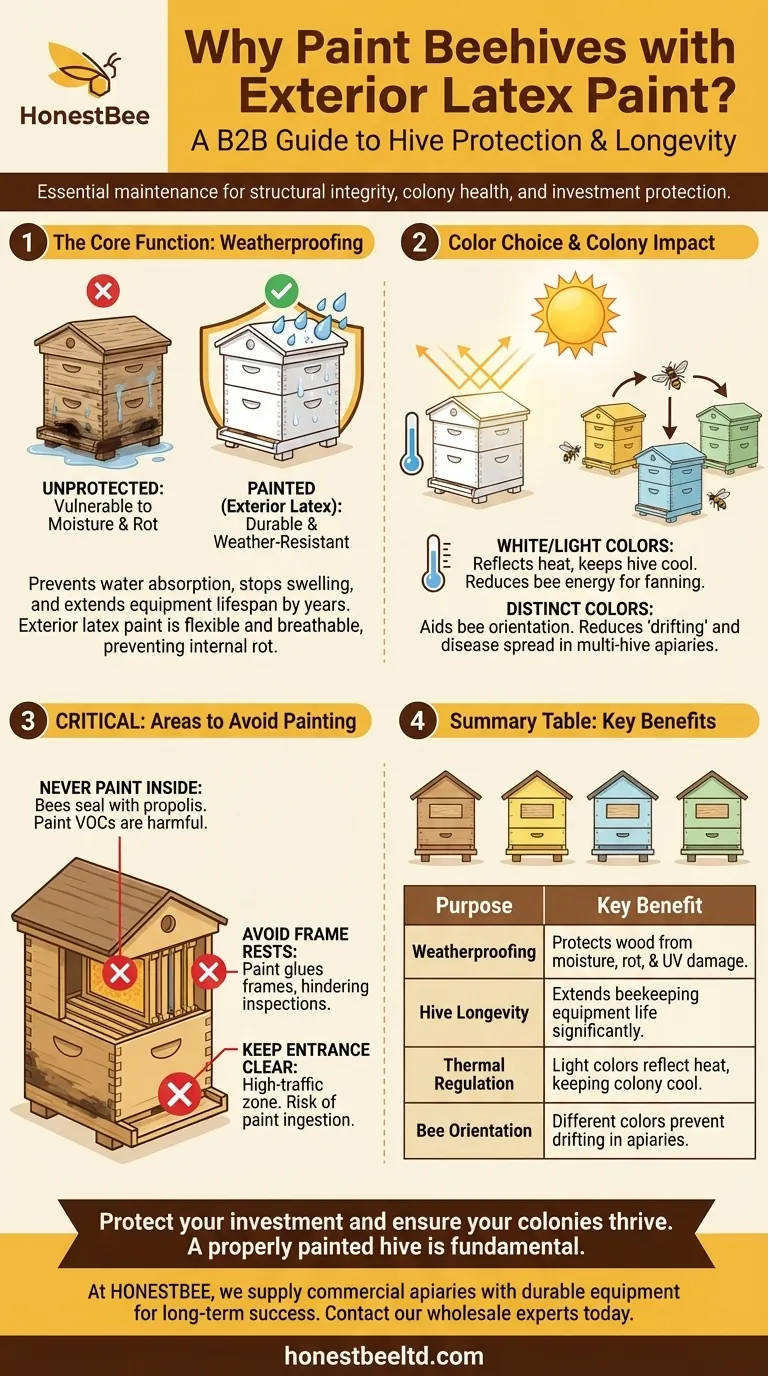
Related Products
- Wholesales Dadant Size Wooden Bee Hives for Beekeeping
- Honey Flow Garden Bee Hive Flow Hive Best Beehive for Beginners
- Professional Insulated Winter Hive Wrap for Beekeeping
- Professional Insulated Plastic Bee Hives
- Langstroth Bee Hives Bee Keeping Box for Beginners Beekeeping
People Also Ask
- What are the advantages of wooden bee hives? Superior Bee Health & Beekeeper Flexibility
- What are the essential pieces of equipment for most beekeepers? Get Started with the Right Gear
- What is the best place to keep bees? Find the Perfect Apiary Site for Your Hives
- What should beginners consider when purchasing beekeeping equipment? A Guide to Essential Starter Gear
- What types of products are available for beekeeping needs? Essential Equipment for Apiaries & Distributors








